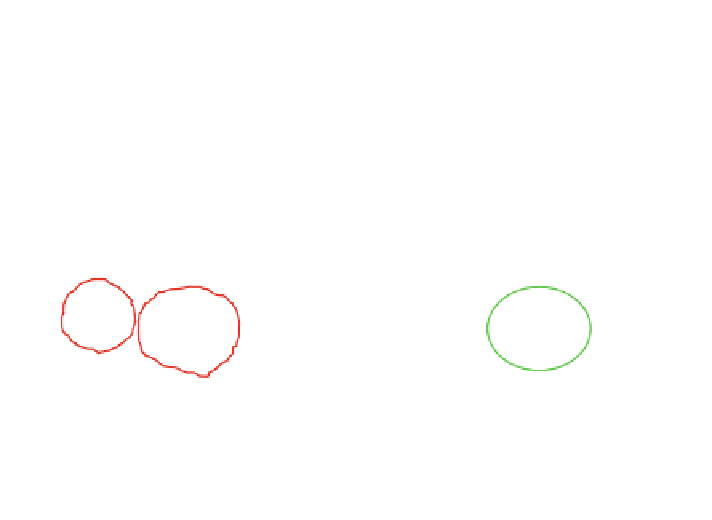Information Technology Reference
In-Depth Information
In the comparison, the net structure and its operational parameters, corre-
sponding to the Wang algorithm, follow the con
guration suggested in Wang et al.
(
2007
) while the parameters for the DE-based algorithm are taken from Table
1
.
Figure
11
shows the performance of both methods considering a test image with
only two white blood cells. Since the Wang method uses gradient information in
order to appropriately
guration, it needs to be executed
iteratively in order to detect each structure (WBC). Figure
11
b shows the results
after the Wang approach has been applied considering only 200 iterations. Fur-
thermore, Fig.
11
c shows results after applying the DE-based method which has
been proposed in this chapter.
The Wang algorithm uses the fuzzy cellular neural network (FCNN) as opti-
mization approach. It employs gradient information and internal states in order to
nd a new contour con
guration. In each iteration, the FCNN tries, as contour
points, different new pixel positions which must be located nearby the original
contour position. Such fact might cause the contour solution to remain trapped into
a local minimum. In order to avoid such a problem, the Wang method applies a
considerable number of iterations so that a near optimal contour con
nd a better contour con
guration can
be found. However, when the number of iterations increases the possibility to cover
other structures increases too. Thus, if the image has a complex background (just as
smear images do) or the WBC
'
s are too close, the method gets confused so that
finding the correct contour configuration from the gradient magnitude is not easy.
Therefore, a drawback of Wang
'
is method is related to its optimal iteration number
(a)
(b)
(c)
Fig. 11 Comparison of the DE and the Wang
s method for white blood cell detection in medical
images. a Original image. b Detection using the Wang
'
'
s method, c detection after applying the DE
method





Search WWH ::

Custom Search